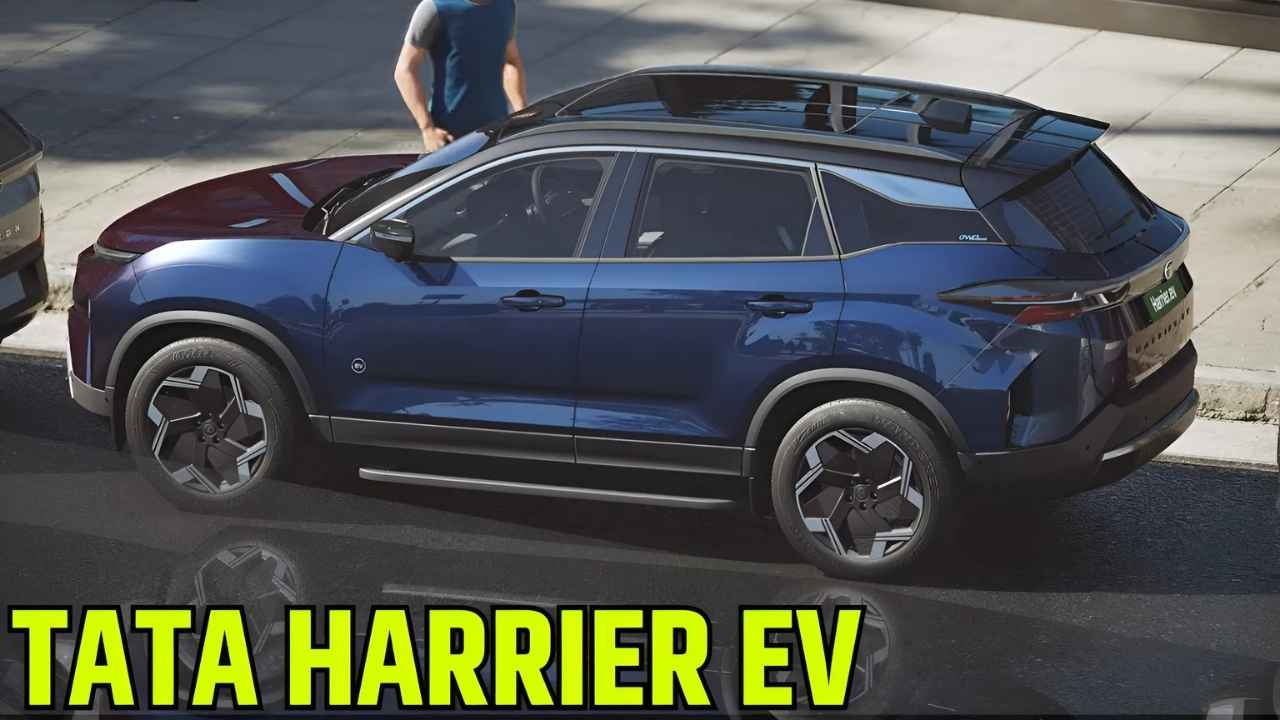Tata Harrier EV: India’s electric vehicle (EV) market is growing rapidly, and Tata Motors has taken a bold step forward by launching the Tata Harrier EV. This all-electric SUV is a significant evolution of the popular internal combustion engine (ICE) Harrier, re-engineered for an eco-friendly future. With a focus on performance, safety, and advanced technology, the Harrier EV is positioned to lead the mid-size electric SUV segment in the country.
As Tata Motors continues to strengthen its EV portfolio, the Harrier EV brings a combination of muscular design, impressive electric range, off-road capabilities, and modern connectivity features. Built on the acti.ev+ architecture with OmegaArc elements, the SUV promises not just sustainability but also thrilling performance and practicality suited for Indian conditions.
Power and Performance
The Tata Harrier EV is offered in two battery pack options—65 kWh and 75 kWh—both using Lithium Iron Phosphate (LFP) chemistry. The 75 kWh battery in rear-wheel-drive configuration offers a claimed range of up to 627 km (MIDC), which makes it one of the highest-range EVs in the Indian market. Fast charging support up to 120 kW ensures that the battery can be charged from 0 to 80 percent in about 25 minutes.
A more powerful AWD variant, known as the QWD (Quad Wheel Drive), is also available. It is equipped with two motors—one on each axle—delivering a combined output of around 390 bhp and 504 Nm of torque. This configuration enables the Harrier EV to accelerate from 0 to 100 km/h in just 6.3 seconds. The SUV is also capable of handling off-road conditions with its robust mechanical setup and six terrain response modes including Rock, Sand, Snow, Mud, and Custom.
Off-Road Features and Drive Modes
- 25-degree approach, 16.6-degree breakover, and 26.4-degree departure angles
- Gradient climbing ability of up to 47 percent
- Boost Mode for enhanced torque during tough terrains
- Transparent Chassis View helps drivers navigate rough paths safely
- Drive modes include Eco, City, Sport, and Terrain Response
Cabin Experience and Technology
The interior of the Harrier EV retains Tata’s rugged SUV layout but adds premium features and a futuristic interface. A large 14.5-inch touchscreen infotainment system takes center stage on the dashboard, accompanied by a 12.3-inch digital driver display and a 10.25-inch MID cluster. Tata also includes a premium JBL 10-speaker sound system with Dolby Atmos technology, providing an immersive in-cabin audio experience.
Other high-end features include powered front seats with ventilation, ambient lighting, dual-zone climate control, wireless charger, 360-degree surround view camera, and an air purifier. The SUV also offers a panoramic sunroof and customizable ambient lighting for a premium feel. Additionally, EV-exclusive features such as Vehicle-to-Load (V2L) and Vehicle-to-Vehicle (V2V) charging are integrated into the system.
Safety and ADAS Technology
- 7 airbags, electronic stability control, and traction control
- ABS with EBD and hill hold/hill descent control
- Electronic parking brake with auto-hold
- ISOFIX child seat mounts
- Bharat NCAP 5-star safety rating
- Level 2 ADAS features: adaptive cruise control, lane keep assist, emergency braking, and collision warning
Pricing and Variants
| Variant | Powertrain | Battery | Range (Claimed) | Ex-showroom Price (₹) |
| RWD Base | Rear Motor | 65 kWh | ~500 km | ₹21.49 lakh |
| RWD Long Range | Rear Motor | 75 kWh | 627 km | ₹24.99 lakh |
| AWD QWD | Dual Motor | 75 kWh | ~550 km | ₹28.99 lakh |
Tata is also offering a lifetime battery warranty and exclusive loyalty benefits to existing Tata EV customers. Deliveries for the Harrier EV are scheduled to begin in July 2025.
Smart Connectivity Features
- OTA updates for infotainment and control modules
- Connected car app for remote locking, climate control, and charge monitoring
- Digital Key and DrivePay (in-car UPI payment integration)
- Summon Mode for remote car movement
- Custom user profiles and voice control




